If you look for information about the Macintosh Plus and its ROM, you’ll usually find that the ROM has a capacity of 128 KB and that it exists in three revisions. But that’s incorrect: there’s a fourth ROM, 256 KB in size, which includes fonts for kanji (Japanese characters). And I found (and preserved) this ROM.
I’m Belgian, and the article was originally written in French before being translated automatically.
I had talked about this mysterious ROM a few years ago. It’s documented by Apple in some old documents, but without much detail. According to Apple, the ROM contains fonts for kanji in 12 and 18 points, and they are loaded at startup by KanjiTalk. On a regular Macintosh Plus, you need a floppy disk with the files, which slows down startup and uses some RAM, whereas on a Japanese Macintosh Plus, the font is in ROM and doesn’t take up RAM. You also avoid loading files from a floppy disk, theoretically saving 6 seconds during startup. That’s a conservative estimate, as we’ll see—it assumes you’re not switching disks manually.
Now, one question remained: how to find the ROM? Getting a Japanese Macintosh Plus shipped was out of the question—it’s bulky and heavy, and there was no guarantee that it had the Japanese ROM… or even that it existed. Searching the internet brings up this thread questioning its existence, and another one explaining that according to failed tests (as we’ll see), the Japanese ROM has the same content as a v2 ROM. A Japanese author tried to find information with no success (he concluded that the ROM was 128 KB, not 256 KB). But this other Japanese site does reference the Japanese ROM (342-0441-A and 342-0442-A), and this one confirms a 256 KB capacity.
In short, no one really knew if the ROM existed, but there were quite a few clues. So I kept digging. Instead of looking for a full Macintosh Plus, I searched for a Macintosh Plus motherboard in Japan, hoping a seller would upload photos that showed the chip references. My first purchase failed: the reference wasn’t fully readable, but the yellow sticker misled me.
With the second one, I had the correct chip reference—and a yellow sticker again. I now had a Macintosh Plus motherboard and its ROM, but no actual Macintosh Plus to test it on. The first step was trying to dump the ROM (two chips), but it didn’t work at first. I used an old device for the dump and ended up with two 64 KB files, which wasn’t what I expected. But I didn’t give up, for a simple reason I noticed with the help of Doc TB: the markings on the chips indicated a 1,024 kilobit capacity, meaning 128 KB.
I had followed the information on this site, which says the Macintosh Plus can use 27C512 chips (64 KB), and I didn’t understand how you could have a 128 KB ROM with that pinout. Until I found a page that explained it. On Rob Braun’s site, it’s clearly stated that the Macintosh Plus has a slightly different pinout than a 27C512 chip. It includes one extra address line, allowing it to address 128 KB, placed where the programming voltage pin would normally be. Since the Macintosh Plus socket isn’t meant for writing to an EPROM, this is entirely transparent. Doc TB helped again: he developed a device that can read many ROM and EPROM types, and he was able to dump my two chips. With a standard adapter, it’s not really possible directly, since it’s a proprietary pinout. That was the earlier cited person’s mistake: the lower half of Apple’s ROM (128 KB) matches a standard ROM.
Before continuing, here’s a link to the files.
Testing the Japanese ROM
At this point, I had a 256 KB dump of the Japanese Macintosh Plus ROM… but nothing to test it with. I didn’t have a Macintosh Plus (just two motherboards), and my first emulator tests failed. The reason is simple: they expect a known ROM, and not necessarily a Macintosh Plus ROM. That’s important to remember when it comes to Mac emulation—there are many models, and emulators don’t always emulate a specific Mac. Sometimes it’s more like a clone, as with Basilisk or SheepShaver. Technically, they emulate something close to a compatible machine. Mini vMac is better suited for this, but it checks the ROM’s checksum, so I couldn’t boot with mine—it’s not in the recognized list.
That’s when I asked for help. And I’d like to thank Samuel (for the ROM dump), Gilles—for the Macintosh Plus—and Doug, for the software part.
Let’s talk hardware first. I didn’t have a Macintosh Plus, just a mouse. Gilles sent me a Macintosh Plus and a keyboard (which didn’t work). But with a PS/2 adapter, I managed. I had originally considered using the Floppy Emu, but I got odd results, and the sound of the floppy drive is more satisfying anyway. So I pulled out two 800 KB 3.5″ floppy disks to copy KanjiTalk 1.0 onto them. A tip: KanjiTalk really doesn’t like running from an English system—every time I put the system disk into a newer Mac, I couldn’t boot again on the Macintosh Plus without recreating the disk.
Now for the software part. First, I had to find an old version of KanjiTalk. You can (for example) find it on Macintosh Garden or on WinWorld. KanjiTalk 1.0 is based on System 3.1 and comes on two floppies. The first is 800 KB and holds the system itself. The second contains the fonts and is 400 KB (I copied it to an 800 KB disk with no issue).
This is where the Japanese ROM shines. The usual behavior on a Western Macintosh Plus is quite long. After around 10 seconds, the system asks for the font disk to load the 12-point font. After about 6 seconds of loading, it asks again for the system disk. Five seconds later, it loads the 18-point font (13 seconds), and finally it needs 15 more seconds with the system disk. Even if you swap floppies quickly, it still takes over a minute (about 1:14 in my video) and a few steps to get the Macintosh Plus started.
With the Japanese ROM, the system loads the 12-point font from ROM, and asks for the 18-point font disk after a little over 10 seconds. About 12 seconds later, it requests the system disk again, and the rest loads quickly (about 15 seconds). So it avoids a few swaps and the Mac is ready after around 52 seconds.
You can also skip loading the 18-point font entirely, which reduces boot time further—to about 25 seconds. I only tested this with the Japanese ROM because swapping ROMs means disassembling the Macintosh Plus motherboard, and I don’t like getting close to a CRT.
In any case, it provides a time gain even greater than Apple’s estimate. Booting with the Japanese ROM saves around 15 seconds—and also frees about 113 KB of RAM, which is significant given the Macintosh Plus could be limited to just 1 MB. Skipping the 18-point font saves even more RAM, since it uses slightly more memory.
The Emulation Case
This part is a bit tricky. By default, emulators don’t recognize the 256 KB ROM and won’t run it. Doug, much more experienced than I am in development, modified MAME to allow the Japanese ROM. It works the same as a regular Macintosh: with a standard ROM, you’ll need the font disk. With the Japanese ROM, you’ll only need it for the optional 18-point font. My tests with a manually compiled version were successful, and the necessary changes to use the Japanese ROM with MAME should be integrated into the software soon.
Update: First, I’ve added a file to the archive. The Macintosh Plus has two ROM chips and the data is interleaved, so I’ve added the reconstructed version to the archive. Second, Ken McLeod modified Mini vMac to accept the Japanese ROM and offers a modified version on GitHub for Apple Silicon Macs. You’ll need the ROM (renamed to MacPlusKani.ROM) and the two KanjiTalk floppy disks. If everything goes well, the first message that appears will ask for the 18-point font.
In any case, this was a project that took time, required persistence, and is personally rewarding: I managed to find something rare, undocumented, and unusual.
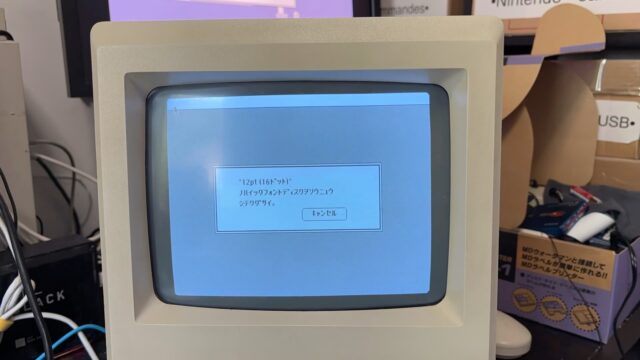
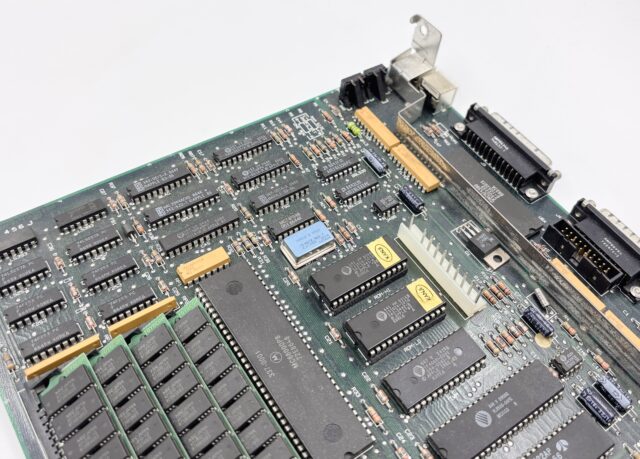
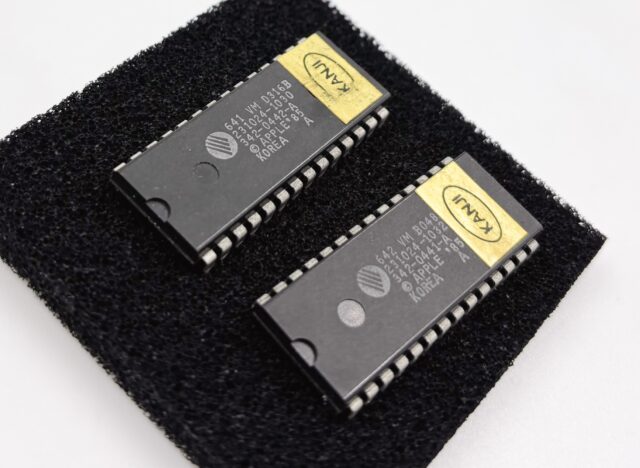

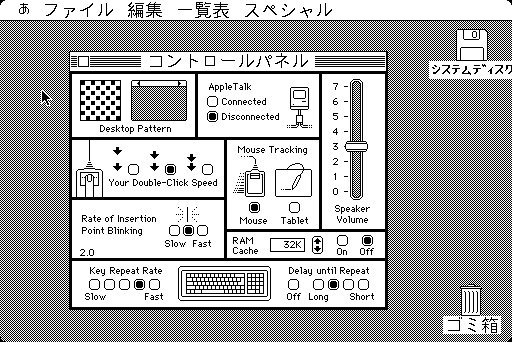
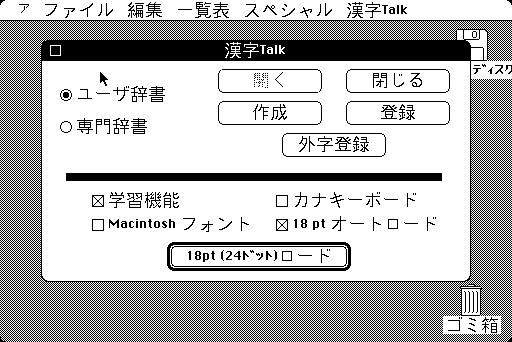
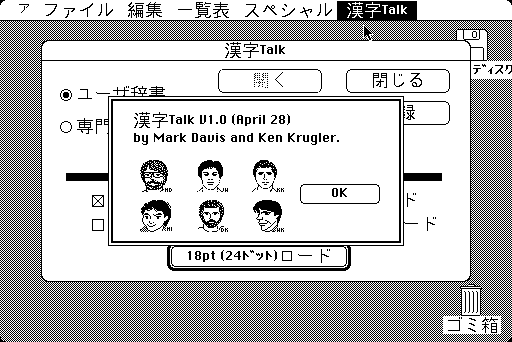
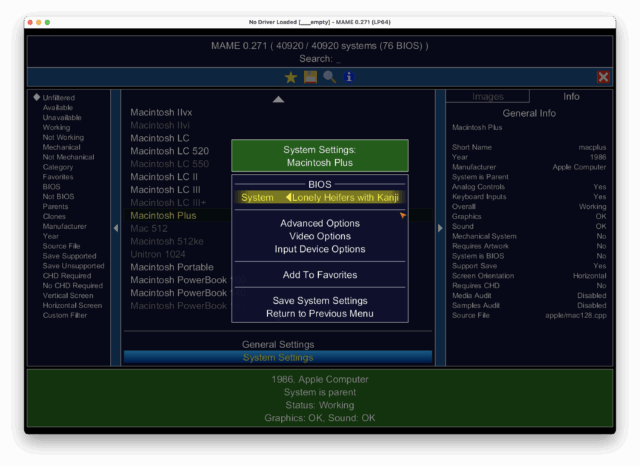

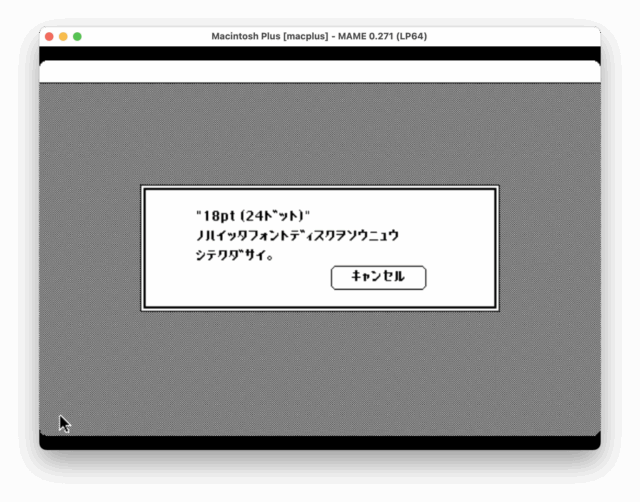
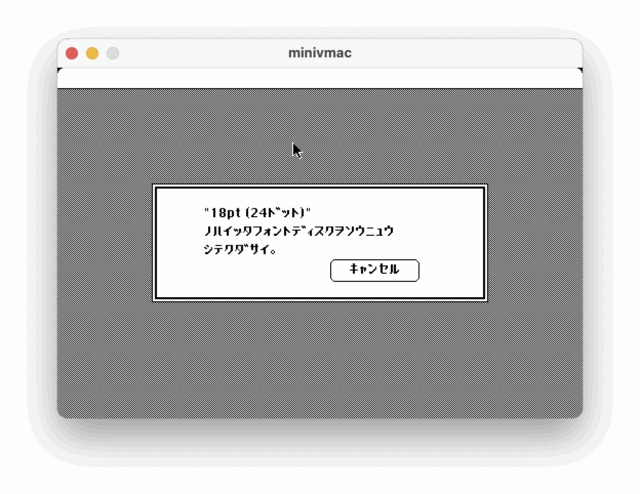
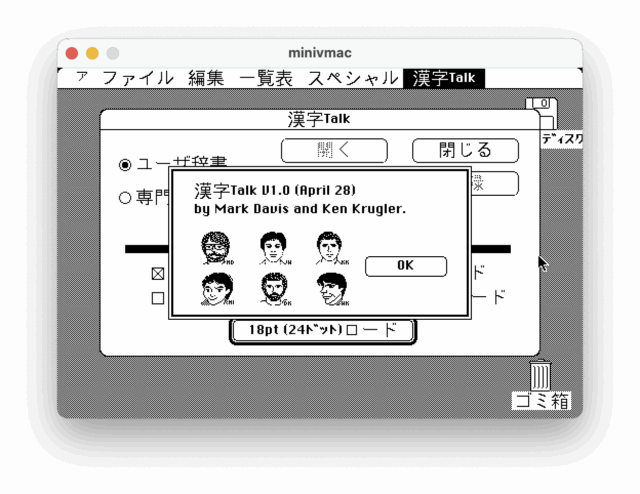



There was at least one other undocumented Mac Plus ROM: « Lonely Hearse » with checksum $4D1EF4E1. The technote did say that its history was condensed.
Looking forward to this Japanese ROM being available, as part of MAME or otherwise.
If you can run the MacEnvy control panel on this system, it would be interesting to see what value it reports for the checksum and whether it actually is different from the Lonely Heifer version.
Sorry, I completely missed the link in my first reading, as well as the part about KanjiTalk being based on System 3.1 which was prior to control panel support.
What a cool quest! There’s something both aesthetically pleasing and culturally appropriate in how the JP ROMs have the little ‘KANJI’ obi wrapped around them. Also funny that MAME ended up being involved: I’ve been watching their recent improvements to Mac emulation with a lot of interest.
The screenshot has Japanese but the chips are made in Korea?
La capture d’écran est en japonais mais les puces sont fabriquées en Corée ?
@peterburk many ROM are from Korea at this time
I’m trying to get this ROM to work with a rebuilt Mini vMac, which looks for hardcoded checksums as well as validating that the ROM checksum actually matches the value in the first four bytes. I am puzzled about how « the ROM is identical to the v2 ROM for first part (128kB) ». The first four bytes of the v2 ROM are 4D1EEAE1, but the first four bytes of the 342-0441-a.u6d file are 4DEA0000. (You can inspect this with tools like hexdump or xxd.) As such, the ROM checksum does not validate, either when computed over only the first 128K or over the contents of both files concatenated. Is there something wrong with the uploaded file or am I making some fundamental error here about its format?
I will modify the files : the 2 files must be interleaved (you can find script to do that)
I have tried with mini vMac and the ROM will not work correctly, for now. Actually, the emulator load only the first 128 kB part, not the font.
Ah! Thank you. I just figured that out before coming back here.
First 8 bytes of 342-0441-a.u6d: 4d ea 00 00 00 60 00 60
First 8 bytes of 342-0442-a.u8d: 1e e1 40 2a 75 00 56 00
Interleaving the bytes results in the expected content:
4d 1e ea e1 00 40 00 2a 00 75 60 00 00 56 60 00
Mini vMac makes two checks: first, it computes a checksum against the first 128K (skipping the first 4 bytes) and compares with the value in the first 4 bytes. If that matches, then it verifies that the value is one of the three known Mac Plus ROM checksums. I added a fourth value, but of course I was using a non-interleaved ROM file so it failed. Will try again after interleaving.
Oh, and you are correct, Mini vMac bases ROM size on the Mac model being emulated (in dfo_RomSize() in SPBLDOPT.i.) Will need to fix that too.
I got this to work in a custom build of Mini vMac that adds patches to define a new Kanji Mac model. The patches validate the checksum against the first 128K but load the full 256K of ROM. Thanks for clearing up the interleaving of the ROM files. Will get my changes up on github soon. See https://mastodon.social/@_the_cloud/114542676933066582.
Wonderful ! I will made an update about that.
https://github.com/thecloudexpanse/minivmac/releases